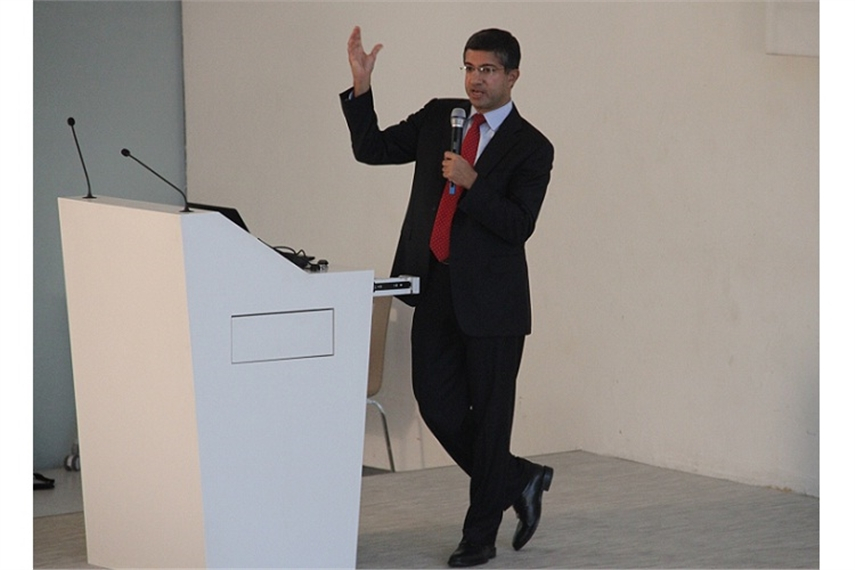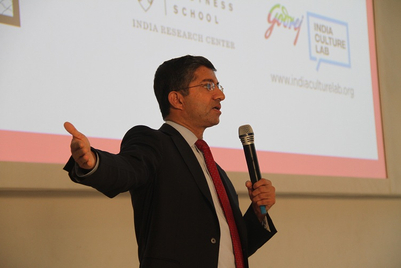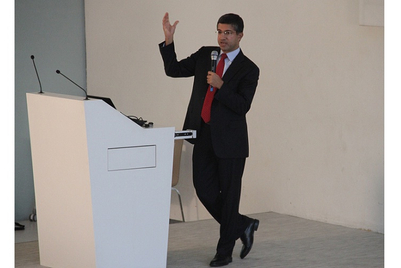If we think of digital transformation, we can think about it in different phases.
Phase one is thinking of the Internet as a distribution channel and put up a website. We can market all that we do or enable people to buy and sell on our website. Phase two is we supplement that with gathering data about our customer. Phase three is interacting with customers in a meaningful way by not just selling to them, but hearing from them which we never had in the offline mode. Stage four is in connecting customers, buyers and suppliers to each other.
The big difference between digital and traditional is that traditional was often a talk-down, broadcast and hub-spoke world. If you think about how digital world’s operate, it’s much more about connectedness. That has profound implications.
Most media companies or even educational are in phase one. If we think about connectedness, we say let’s add comments to our articles and allow people to talk. That’s an afterthought. That’s not really connecting them. That’s when you get the trolls, the bad comments, that drives out the good audience. That’s not about connectedness integrated into the product design.
If you compare those the first model (top-down, hub and spoke, broadcast) versus connected platforms. When these two models compete, the history of digital tells us that the connected platform wins. Why? If the consumer is in a connected model, the value one gets from the product does not depend just on the product quality. It depends also on how many other people are connected to it and the quality of that audience.
My value of Facebook entirely depends upon whether my friends are there. It’s only a function of that and not a function of quality per se. If there is a company that has high quality content that is going up against a company that has a connected platform, it might actually lose to the connected platform. This is the first example of the content trap. This aspiration of the tendency (it’s an absolutely rational tendency of producing the best content) may be exactly the wrong strategy.
This is not a matter of opinion but of economic forces. We see this time and again. Apple versus Microsoft in personal computers. Apple had the better product but ends up with a three per cent market share. That was because it was not a connected system but a closed system. Microsoft on the other hand was on a connected platform. They had the network. Once they were ahead and went further ahead and won the entire market.
Facebook versus Google plus. Facebook had he network. Google + came with a product with many thought was better. Then as someone else said, “there is no one else playing in the sandbox, except you”. The value comes from connecting. Or take eBay. When it wins, it wins big. When it loses it loses the entire market. Air BnB, Uber, tencent all these are examples of connected platforms. Just to think of the difference, we say “Content is king” is itself an ill-defined axiom. If you compare content to companies that have built their businesses around connectedness,
If you take the top ten digital giants, they have created three-trillion dollars worth of market value over the last fifteen years. This way of looking at the world also has implications on how you define your business. In the top down world, people defined their business as making product, making content. In the connected world, I define my role as connecting and then insert some content in that. It has profound implications for marketing. In the top down world, I am marketing to get each customer one by one. It’s a lot of work. In the connected world, my customers are my salesforce.
Once I have the market, the value to the next customer comes from existing customers. De facto, they have spent no money. Think about how many ads facebook airs about itself. This is the same thing for many social networks. If you get your product strategy right, the marketing follows.
If we start thinking about communities, we have historically looked at it as virality or word of mouth. That’s a very narrow way to think about it. If you get the product strategy right around connectedness, it has big implications for marketing.
(This is the third part of a special series with the Harvard Business School strategy guru. He was recently in India to speak at the Godrej India Culture Lab. His latest book ‘The Content Trap’ presents an approach to digital transformation that favours fostering connectivity over focusing exclusively on content.)




.jpg&h=334&w=500&q=100&v=20250320&c=1)
.jpg&h=334&w=500&q=100&v=20250320&c=1)

.jpg&h=334&w=500&q=100&v=20250320&c=1)


.jpg&h=334&w=500&q=100&v=20250320&c=1)
.jpg&h=334&w=500&q=100&v=20250320&c=1)






.png&h=268&w=401&q=100&v=20250320&c=1)

.jpg&h=268&w=401&q=100&v=20250320&c=1)

